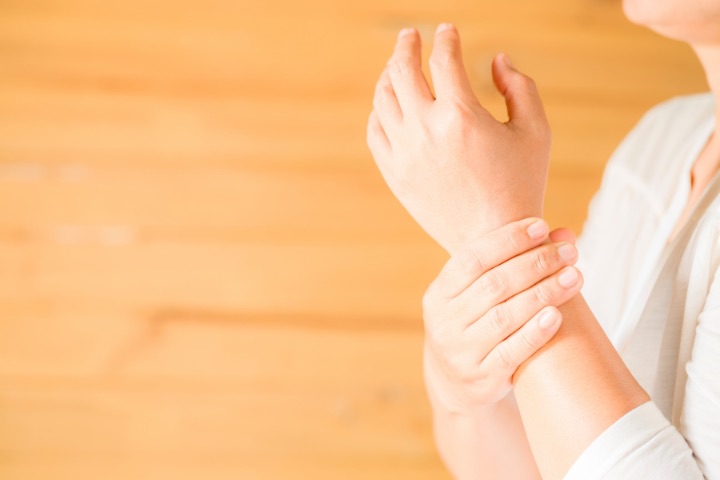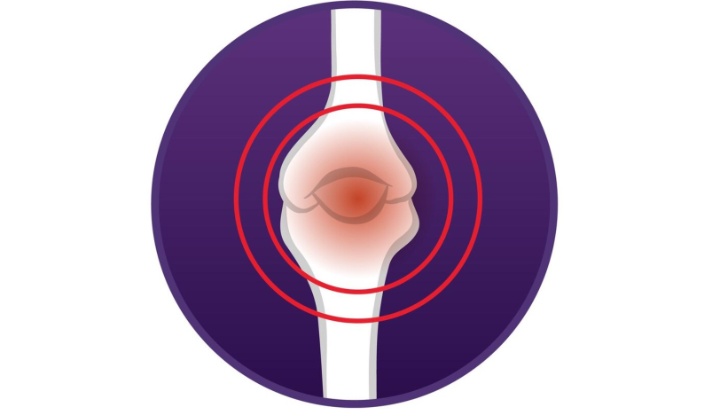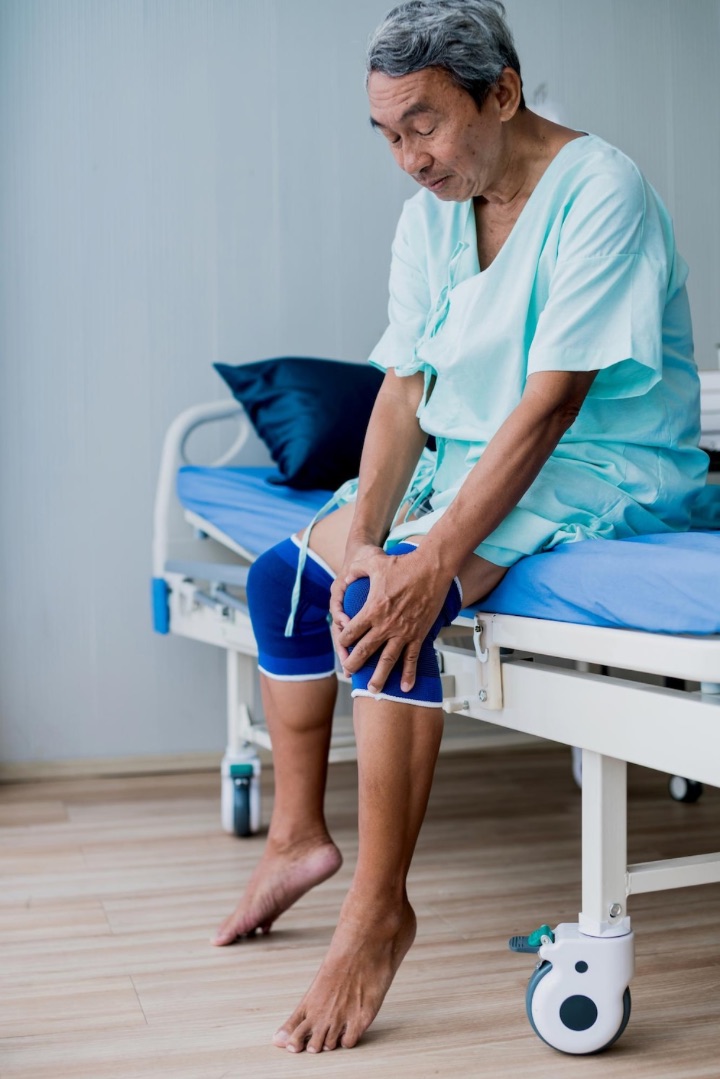Osteoarthritis is the most common form of arthritis worldwide, affecting over 300 million people. According to Arthritis Australia, over 3 million Australians have osteoarthritis. This equals about 13% of the population.
Osteoarthritis (OA) is a chronic, progressive degenerative joint disease in which the smooth cartilage lining and cushioning of the ends of bones gradually thin and wear down over time. This also causes pain, stiffness, swelling, and reduced mobility in the affected joints. As the cartilage breaks down, bone rubs against bone, causing joint damage, bony spurs called osteophytes, and loss of normal joint function.
Osteoarthritis is a type of arthritis that most commonly affects the hands, knees, hips and spine, though it can impact any joint. The disease course and severity vary by individual, but osteoarthritis generally worsens gradually over the years as the ossein deteriorates.
Medications, physical therapy, lifestyle changes, and sometimes surgery help manage osteoarthritis symptoms and improve quality of life.
What Causes Osteoarthritis? Who Are Affected by Osteoarthritis?
Osteoarthritis is caused by the gradual breakdown of cartilage that cushions the bones’ ends within joints.
Factors like aging, obesity, injury, and genetics contribute to this gradual degeneration over time, leading to pain, stiffness, swelling and loss of mobility in the affected joints:
- Age – The risk increases since cartilage loses elasticity and deteriorates. OA commonly begins after age 45.
- Obesity – Excess weight stresses load-bearing joints like hips and knees, increasing wear and tear.
- Joint injury – Previous injuries like ligament tears or fractures lead to improper joint function and more rapid cartilage breakdown that causes a risk of developing this condition.
- Genetics – Gene mutations affecting cartilage collagen and abnormalities in shape can increase susceptibility.
- Occupational hazards – Jobs involving repetitive motions, heavy lifting, kneeling or squatting increase the risk of OA.
- Joint anatomy – Having improperly formed joints that don’t fit well together increases friction and cartilage wear.
In summary, factors that place excessive mechanical stress on such weight-bearing connections contribute to cartilage degeneration over time, eventually leading to osteoarthritis.
Common Signs and Symptoms of Osteoarthritis
People with osteoarthritis experience a variety of mild to severe symptoms affecting their mobility:
- Joint pain – Achy pain in the affected area that worsens with use and improves with rest. Usually, the first noticeable symptom while doing daily activities.
- Stiffness – Joint stiffness is common after sitting or lying down for a while. Morning joint stiffness usually lasts less than 30 minutes.
- Swelling – Fluid accumulation causes puffy, swollen joints.
- Tenderness – Joints feel tender when touched or pressed.
- Limited mobility – Reduced range of joint motion due to pain and stiffness. Daily tasks become difficult.
- Crunching sensation – Grating or cracking noise with movement indicates cartilage roughening.
- Bone spurs – Extra bone material forms resulting in deformity. Spurs can irritate nearby nerves.
- Muscle weakness – Muscles around the joint weaken due to disuse and aging.
Symptoms usually develop slowly over the years and progress with time. Stiffness and pain are worse after periods of overuse or inactivity.
Common Joints Affected – Osteoarthritis of the Hips, Limbs and Spine
Photo Credit: brgfx
While most joints are susceptible to this condition, the most common areas osteoarthritis affects are:
- Knees – The knee bears the full weight load during many activities, making it vulnerable to wear and tear. So, inner knee osteoarthritis is a frequently occurrence.
- Hips – Also load-bearing joints, hip joints are susceptible to cartilage breakdown and can develop osteoarthritis. Pain is felt in the groin and front of the thighs.
- Hands & fingers – The many small joints of the fingers are commonly affected, causing swollen knobby finger joints.
- Spine – The breakdown of discs and facet joints in the neck and lower back cause pain, stiffness and nerve compression.
- Feet – OA in the feet most often affects the big toe joint and midfoot. Bunions are also common.
How is Osteoarthritis Diagnosed?
Osteoarthritis diagnosis involves a clinical examination, medical history and specific tests:
- Medical history – The doctor asks about pain and other symptoms, onset, joint pain locations, family history, occupation, and past injuries.
- Physical examination – Joints are examined for swelling, tenderness, range of motion, instability, stiffness, warmth, and crepitus.
- Imaging tests
- X-rays – Help visualize joint space narrowing, osteophyte formation and bone spurs.
- MRI – Provides detailed images of cartilage, bone, ligaments and tendons. Can detect early OA.
- CT Scan – Good for assessing bone changes and damage.
- Ultrasound – Used to examine soft joint tissues like ligaments and tendons.
- Lab tests – Blood tests help rule out inflammatory arthritis conditions like rheumatoid arthritis and in turn lead to diagnosis of osteoarthritis.
- Joint fluid analysis – Analyzing joint fluid aspirated from the knee or hip can detect inflammation and rule out other arthritic conditions.
Osteoarthritis Treatment Goals and Approaches for Pain Management
The main goals in treating osteoarthritis are alleviating joint pain and stiffness, improving joint mobility and function, slowing disease progression, and enhancing quality of life. This involves a combination of treatment approaches:
Photo Credit: Lifestylememory
Lifestyle Changes and Home Remedies
- Exercise to improve joint flexibility and strengthen muscles around the joint for added support.
- Weight loss to reduce mechanical stress on weight-bearing joints.
- Resting the strained joint when aggravated and avoiding activities that strain it.
- Using hot and cold therapy can help relieve pain and stiffness.
- Trying mind-body practices like tai chi, yoga and meditation to reduce pain perception.
Medications
- Doctors may prescribe analgesics like acetaminophen and NSAIDs to relieve pain.
- Nutraceuticals like glucosamine, chondroitin and turmeric have anti-inflammatory effects.
- Corticosteroid injections can temporarily improve pain and swelling.
- Hyaluronic acid injections help lubricate the joint.
- Topical creams with capsaicin, menthol or NSAIDs provide local pain relief.
Supportive Devices and Assistive Equipment
- Knee braces, shoe inserts, splints or canes can reduce joint strain and improve mobility.
- Assistive equipment like walkers, scooters or teachers, help maintain independence with daily tasks.
- TENS (transcutaneous electrical nerve stimulation) devices reduce pain signals.
Physical and Occupational Therapy
- Stretching and strengthening exercises improve flexibility, mobility and stability.
- Modalities like ultrasound and heat/ice provide pain relief.
- Joint protection and energy conservation techniques take the stress off the joints.
- Assistive device training maximizes function and safety.
Surgery for osteoarthritis
- Osteotomy – Joint realignment procedures for knee, hip or ankle OA.
- Arthroscopic surgery – Smoothening damaged cartilage or removing loose fragments.
- Joint replacement – Partial or total knee, hip or shoulder replacement.
Alternative Therapies
- Acupuncture – Fine needles inserted in specific body points helps relieve pain.
- Massage therapy – Relaxes muscles and reduces stiffness.
- Chiropractic – Spinal manipulation and joint mobilization techniques provide pain relief.
- Dietary supplements – Anti-inflammatory herbs like turmeric and omega-3 fatty acids.
Lifestyle Tips for Managing Complications of Osteoarthritis Symptoms and Avoiding Risk Factors
Photo Credit: Freepik
Here are some self-care tips recommended to patients for the management of osteoarthritis:
- Maintain an optimal body weight to prevent extra stress on weight-bearing joints.
- Practice joint protection techniques – avoid activities that strain joints, distribute weight evenly, and use assistive devices.
- Exercise regularly to preserve joint mobility – walking, cycling, and water exercises are best.
- Use heating pads, paraffin wax, and warm showers before activity to loosen joints.
- Use cold packs after activity to reduce swelling and pain – ice packs, gel packs, soaking in cold water.
- Wear shock-absorbing shoes with good arch support.
- Use ointments like capsaicin cream to relieve localized pain.
- Try mind-body therapies like yoga, tai chi and meditation to help manage pain.
- Avoid staying in one position too long – take frequent breaks to move joints through the full range of motion.
- Eat a diet rich in omega-3 fatty acids, antioxidants, fruits, and vegetables, and avoid pro-inflammatory foods.
The key is using a combination of medical and lifestyle approaches for optimal osteoarthritis management. While osteoarthritis cannot be cured, common symptoms often can be well managed by protecting your joints, staying active and maintaining a healthy body weight. See your doctor if you notice increasing joint pain, swelling or stiffness that affects your daily function.
Frequently Asked Questions (FAQs) About Osteoarthritis
What is the best way to treat osteoarthritis?
The best osteoarthritis treatment options combine lifestyle changes like exercise, weight loss, rest, medications, injections, and physical therapy. Treatment for osteoarthritis may also involve possibly surgery for severe cases.
What are 2 symptoms of osteoarthritis?
Two main symptoms may include joint pain that worsens with use and joint stiffness, especially in the morning or after inactivity.
What is the difference between osteoarthritis and arthritis?
Osteoarthritis is a degenerative condition and also the most common form of arthritis caused by joint cartilage breakdown from wear and tear. Other types like rheumatoid arthritis, involve immune system attacks on the joints.
What should you not do with osteoarthritis?
Activities that stress affected joints like high-impact sports, heavy lifting, and repetitive motions, should be avoided with osteoarthritis to prevent further joint damage.



